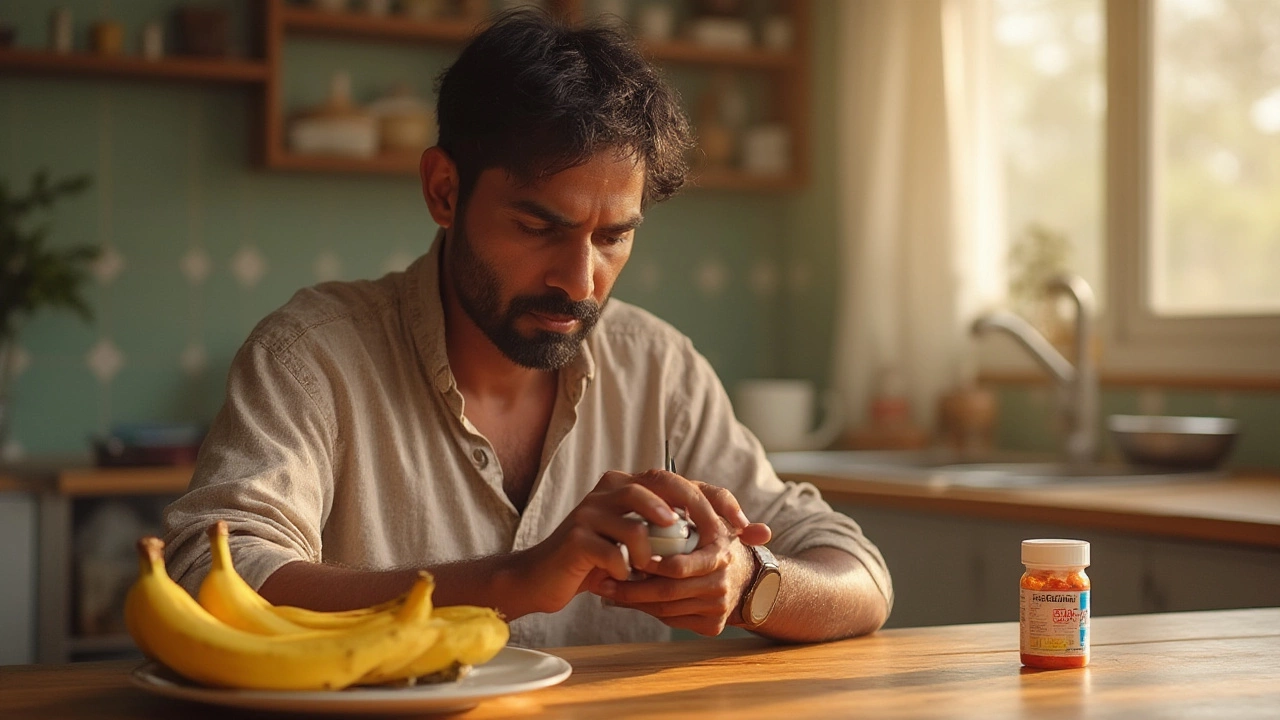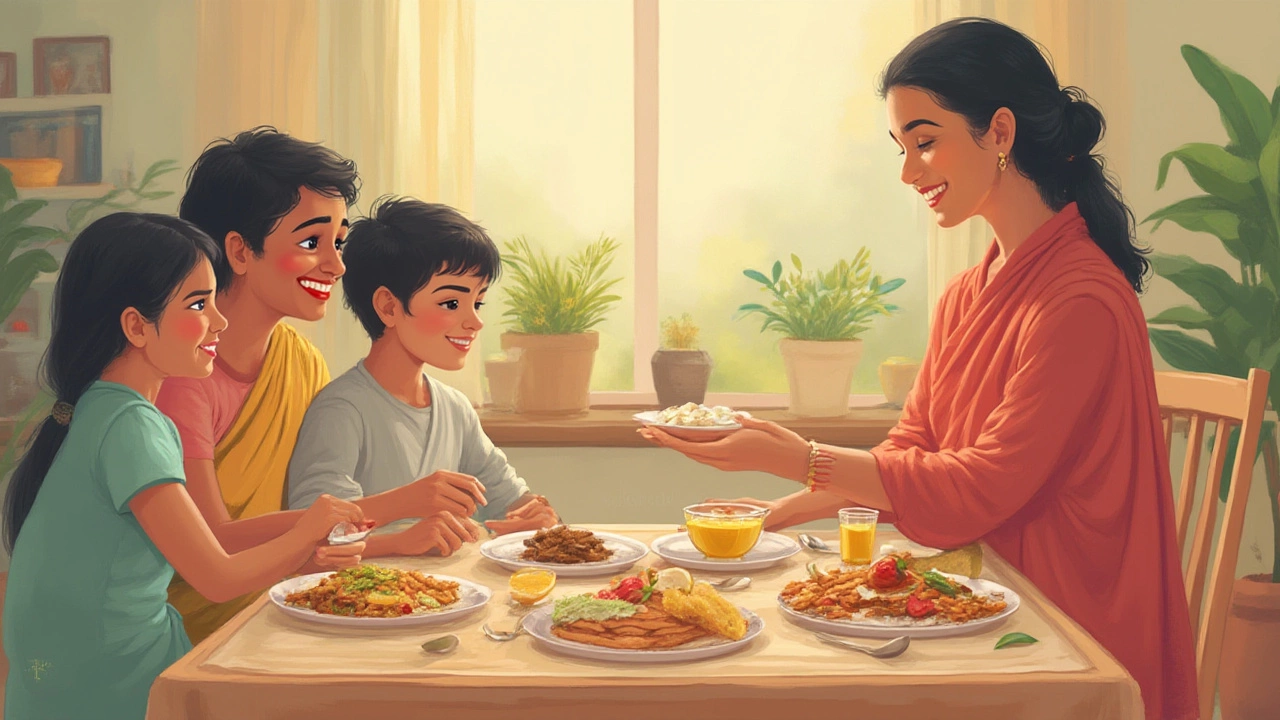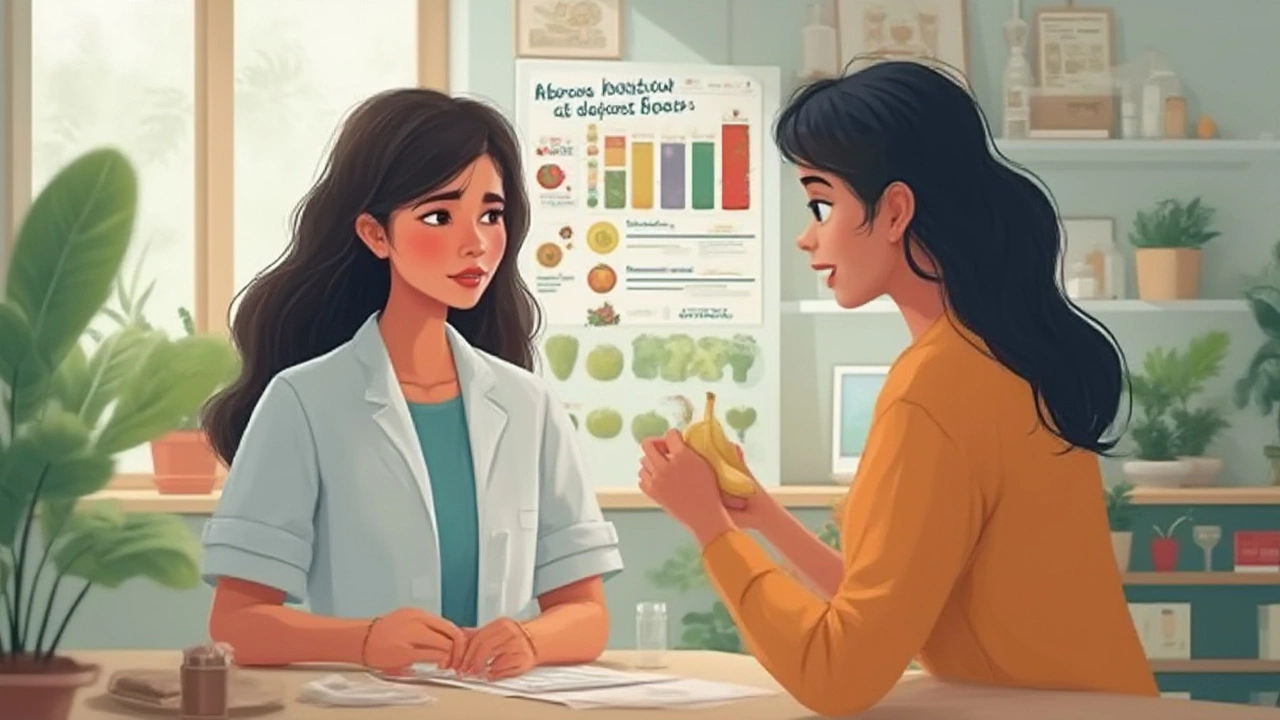
You grab a banana on your way out, but a tiny voice nags at you: "Wait, aren't bananas super sweet? Will this mess with your blood sugar, especially if you're on metformin?" If you’re living with diabetes, this question isn’t as simple as it looks. With fruit’s reputation for being "healthy sugar," and metformin’s role in controlling blood glucose, you can feel like you’re walking a dietary tightrope every day. It’s not just about what you eat, but how it fits into the bigger picture of medication, blood sugar control, and your actual lifestyle—like sneaking in a fruit snack while running after your kids or getting late-night cravings.
What Does Metformin Actually Do?
Let’s get real about metformin. It’s one of the world’s most prescribed diabetes medications, especially for people with type 2 diabetes. Metformin doesn’t make your body pump out more insulin; instead, it helps your cells use insulin better and lowers the amount of sugar made by your liver. Think of it as a messenger that tells your body, "Let’s handle sugar more efficiently!" The result? Lower blood sugar numbers, fewer nasty sugar spikes after meals, and sometimes even weight loss—bonus!
But even though metformin is a rockstar in the diabetes world, it’s not magic. You still need to pay attention to what you eat. Too much sugar or refined carbs and, well, metformin can only do so much. According to data published by the Indian Journal of Endocrinology and Metabolism in 2023, over 70% of people using metformin still needed to adjust their diets to get effective long-term results. So, food and meds work together, not in isolation.
One more crucial thing: metformin rarely causes low blood sugar by itself. But if you pile on other diabetes medicines or drastically cut your calories, you could run into trouble. That’s why what you eat day-to-day—including your go-to fruits—matters way more than most people think.
Bananas: Sugar Bomb or Safe Snack?
Bananas feel like the perfect snack—easy, portable, and naturally sweet. But here’s where it gets interesting. A medium banana (about 118 grams, not that you’re going to weigh each one at home) contains roughly 105 calories, 27 grams of carbs, 14 grams of sugar, 3 grams of fiber, and hardly any fat. On the surface, that 14 grams of sugar can sound scary if you’re watching blood sugar.
But context is everything. Bananas aren’t the same as chocolate bars, even if carbs are carbs. Their natural mix of fiber, potassium, vitamin B6, and vitamin C does good things for your heart, muscles, and energy—even for diabetics. Fiber, for example, actually helps slow down how fast your body absorbs sugar, blunting that post-snack sugar spike.
To paint a picture, let’s break down a comparison:
| Food | Carbs (g) | Fiber (g) | Sugar (g) |
|---|---|---|---|
| Banana (medium) | 27 | 3 | 14 |
| Apple (medium) | 25 | 4 | 19 |
| Orange (medium) | 15 | 3 | 12 |
| 1 cup grapes | 27 | 1 | 23 |
See, bananas are competitive but not wildly out of range. The real clincher is portion size and what you eat with it. The glycemic index (GI)—which measures how quickly a food bumps up your blood sugar—puts bananas in the "medium" range (about 51). That’s milder than white bread but higher than most berries. The riper the banana, the higher the GI, because as it ripens, starch turns into sugar. So a super-soft, spotty banana will raise your sugar more than a firm, just-ripe one. Kids love sweet, mushy bananas, but for better blood sugar, firmer is safer.

How Bananas Interact with Metformin
Let’s clear up the biggest worry: eating bananas with metformin won’t cause dangerous medical interactions. There’s no evidence that bananas block metformin’s absorption, mess with its effectiveness, or create any toxic combo in your body. Pop culture and WhatsApp messages love making stuff up, but there’s simply no chemical clash here.
The main thing to watch? How the *sugar* in bananas combines with your body’s ability to handle carbs (with help from metformin). If your diabetes is under decent control and metformin is keeping your sugars steady, a small or medium banana as part of a balanced meal is likely fine. In fact, plenty of dietitians in India and globally recommend bananas to diabetics—as long as you’re smart about quantity and what else you put on your plate that day.
Of course, everyone’s a little different. I remember when my mother-in-law—a metformin user—grabbed a banana right before heading to our local Rameshwaram breakfast joint. Her post-breakfast sugar numbers were excellent, but add a masala dosa and sweetened chai and things can tilt. Your meal makeup, activity level, even genetics play a role. Tracking your responses (maybe with a simple blood sugar log or CGM) after eating fruit is way more helpful than making blanket rules for everyone.
One commonly overlooked tip: Pair your banana with protein or a little healthy fat. Peanut butter on sliced banana, for example, works wonders for slowing down sugar absorption and keeping you full longer. Anika, my daughter, alternates between banana slices on roti with a dab of hung curd, or a quick smoothie with spinach and nuts—simple, filling, and gentle on blood sugars.
Busting Banana Myths for People with Diabetes
Alright, time to bust some myths. First, there’s no "bad fruit" if you have diabetes. Plenty of diabetic educators say, "It’s not the fruit, it’s the portion." One large 2022 study from AIIMS Delhi tracked over 3,000 diabetics for a year and found that including moderate fruit servings (including bananas) didn’t worsen blood sugar—what mattered most was eating patterns as a whole.
Let’s tackle some popular myths:
- Myth 1: Bananas are forbidden if you have diabetes. False. Sensible portions are perfectly safe for most people on metformin.
- Myth 2: Only green (unripe) bananas are safe. Not really—just remember unripe ones have less sugar and more starch, which digests slower.
- Myth 3: Eating bananas causes sudden sugar spikes. The fiber content slows things down, especially when paired with protein or fat.
- Myth 4: You can eat as many bananas as you want if you’re on metformin. Nice try, but no—your body still has to process the sugar.
- Myth 5: Never eat fruit in the evening. There’s no solid science that says one time of day is better, but watch your portion if you’re less active at night.
It gets even stickier during festivals or travel. My son Vihaan once hoarded three bananas at a family pooja (while dodging laddus!). We turned it into a teachable moment—fruit is always better than mithai, but even fruit has natural sugar. The key, for anyone with diabetes, is to check your own blood sugar a couple of hours after trying something new. If you see a spike, try eating half a banana next time or pair it with some nuts.

Practical Tips for Enjoying Bananas with Metformin
Wondering how to work bananas into your life and not wreck your blood sugar? Here are some tried-and-tested tips that work for many families dealing with diabetes every day.
- Stick to small or medium bananas. Giant ones can have up to 30 grams of carbs—a third of your daily limit if you’re watching closely.
- Slice a banana and share. Kids, partners, or coworkers hovering around? Perfect excuse for portion control.
- Avoid those super-soft, brown bananas if you’re sensitive to sugar spikes. Go for firmer, just-ripe ones.
- Always try to eat bananas as part of a meal, not by themselves. The combo slows down sugar absorption.
- Test your own blood sugar response about 2 hours after eating—knowledge beats guesswork every time.
- If you make smoothies, add leafy greens, chia seeds, or a scoop of unsweetened curd. The nutrients and added protein counterbalance the fruit sugar.
- Watch what else is on your plate. If you’ve had lots of rice, roti, or sweets that day, maybe save the banana for tomorrow.
- Bananas are amazing for on-the-go (hello, busy school mornings or power outages in Bangalore!). Just remember not to overdo it if you’ve been inactive that day.
If you’re meal-planning for the week, here’s a sample pattern:
- Monday: Banana slices mixed with plain oats and walnuts for breakfast.
- Wednesday: Half a banana post-walk, paired with a boiled egg for protein.
- Saturday: Freeze banana pieces and blend with a handful of spinach and almond milk for a smoothie after yoga class.
Everyone’s diabetes management looks a little different. Some days are good, some are tricky. But knowing the facts—rather than just following rumors—makes it way easier to relax, enjoy your food, and live your life. Bananas aren’t the villain; it’s all about the balance, your meds, your routine, and your plate.

Write a comment